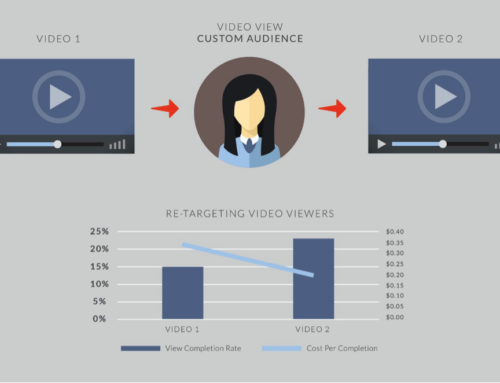We are a big believer that every good content marketing strategy begins with a comprehensive audit of the website’s current performance. The simple reason is that you cannot plan ahead if you do not already have a great understanding of where you currently are.
In this blog article, We will show you how a content audit with six important Google Analytics reports can help you make some smart decisions about the health of your current site, what your audience wants from your content, and how you can benchmark your performance for future content marketing efforts.
The six reports include the following:
- Channels report
- Landing Page report
- New vs Returning Visitor report
- Frequency & Recency report
- Site Search report
- Behavior Flow report
Now, these aren’t the only reports you should use in your content audit, and you don’t need to be a Google Analytics doyen to gather insights from these reports, you just need to know what you’re looking for.
For the above-mentioned reports, we will aim to answer the following questions about content on your website:
- How is my audience finding my content? (Channels report)
- Which content piece is performing the best in terms of traffic, engagement, and conversion? (Landing Page report)
- What should my content performance benchmarks be? (Landing Page report)
- Do I need to prioritize building an audience; or should I nurture my existing audience? (New vs. Returning report)
- How many pieces of content do I need to create a month? (Frequency & Recency report)
- What are the topics I should be talking about, but are not? (Site Search report)
- Is my content successful at driving business transactional goals? (Behavior Flow report)
- What is the value of my content? (Behavior Flow report)
Okay then, Lets start with the six reports.
1. Channels report
Where is it?
ACQUISITION > ALL TRAFFIC > CHANNELS
Questions it will answer:
How is my audience finding my content?
Which channels are creating the most leads?

This report is useful for understanding where your visitors are coming from and which channels are the most effective sources for your content.
Using your “Converter” Advanced Segment, you can see which channels are driving the best quality of traffic and conversions to your website. This can help you identify where you need to improve your content marketing.
Two key things to look out for in the Channels report are:
- Which channels are delivering the most traffic to your site?
- Which channels are delivering the best quality traffic to your site?
There is a difference. For quantity, look at the Acquisition metrics; for quality, consider the Behavior metrics and the “Goal Conversion Rate.”
For example, if you are pushing your content out on your social media channels and are seeing high bounce rates and a low Average Session Duration, this could mean your social media audience is not finding the content they want. Or, it could also mean that the content they see on your site does not properly represent what your social media snippets are promising.
Alternatively, it could indicate that your content may not be displaying well on mobile devices (where most social media traffic tends to come from), and is giving users a bad mobile experience. All of these insights can help you better optimize your content distribution strategy.
2. Landing Pages report
Where is it?
BEHAVIOR > SITE CONTENT > LANDING PAGES
Questions it will answer:
What is the most popular content (in terms of performance)?
What type of content to create for your audience?
What benchmarks should you set for future content efforts?

The Landing Page report allows you to see some real performance results around the content currently on the website. If, for example, all your blog content is housed under the same sub-folder (“/blog/”), then a quick way to check the top-performing content is to use the search bar in the report and paste in that section of the URL (for example, ‘/blog/). Using this search bar will only show you URLs that contain ‘/blog/’ on the site.
Those who have a tidy content management system (CMS) might be able to view this directly in the “Content Drilldown” report instead.
3. New vs. returning visitors report
Where is it?
AUDIENCE > BEHAVIOR > NEW vs RETURNING
Questions it will answer:
Depending on your marketing goals, this report shows you how successful your content is at building brand awareness (new visitors) or nurturing an existing audience (Returning visitors).

The New vs. Returning report is vital if you’re looking to understand which type of content marketing strategy to pursue; especially for content marketing goals that revolve around audience growth (e.g., brand awareness, email signups, and engagement).
This report is not so much focused on leads and sales as it is on giving insights related to building and nurturing an audience higher up the conversion funnel. It’s an important report because it reveals whether your current content is doing a good job at introducing your brand to potential customers.
To start, I like to make this report simple to read by clicking the pie-shaped symbol so I can see the split.
4. Frequency & Recency report
Where is it?
AUDIENCE > BEHAVIOR > FREQUENCY & RECENCY
Questions it will answer:
What is the optimal amount of content I need to create each month?
The Frequency and Recency report simply shows you how often your audience returns to your website in two ways:
- The average amount of times (sessions) a visitor has on your site
- The average amount of days between these sessions
When you first open this report, you will see that the first row of the ‘Count of Session’ table will have by far the most traffic. This is because it also includes all New visitors to your site. You will want to filter these out. You really only want to see the behavior of Returning Visitors. You will need to create a “Returning Visitor” Advanced Segment.

5. Site Search report
Where is it?
BEHAVIOR > SITE SEARCH > SEARCH TERMS
Questions it will answer:
Identify what your audience wants from your content
What they are struggling to find on your website
What content topics are missing

The Site Search report looks at what visitors to your website type into the search bar within your website. It is a good indicator of what your audience wants to do on your site or what they are struggling to find.
Most websites are built with audience intent in mind, which means the results in the Site Search report only reflect a fraction of the visitors to your site. As a result, what you find in this report should not dictate your content marketing topics but it is worth looking at how many times people are typing a common word or phrase into the search bar.
An example is a client of mine, which is a university: When we looked at the Site Search report, we saw regular searches for words like “unit guide,” “Handbook,” and “unit guides,” which told us that people researching what the university offers were finding it difficult to find content about their courses and potential study paths.
Our solution was to make the university course handbook available to download on the homepage. Searches for the handbook plummeted. Likewise, audiences searched for “important dates,” “timetable,” and “calendar.”
Again, what this told us was that people wanted to see what events were ongoing for a particular month at the University, but they could not find where this content was housed. Thus, we created a widget on the site that allowed visitors to find events and exam times.

Think of the Site Search report as a visitor “feedback” section of your site. It allows you to identify gaps in your current content strategy or user-experience problems with the website.
6. Behavior Flow report
Where is it?
BEHAVIOR > BEHAVIOR FLOW
Questions it will answer:
Where is your audience going after they have landed on your blog page?
Has the content been successful in driving people to the next stage of the funnel?

We, as content marketers, often put so much time and effort into driving traffic to our content that we don’t put much thought into what happens after they’ve consumed it. I’ve been guilty of this many times and when it comes to assessing content performance, I would use Behavior metrics such as Bounce Rate or Avg. Session Duration and make assessments on content performance from there.
While these metrics are important, your assessment of the content performance is only half done, simply because as such metrics don’t really give you any insight into one of the most important questions content marketers need to be answering: How is content contributing to the success of my business? This is where the Behavior Flow report can be useful.
All content marketing campaigns need to have goals attached to them. By goals, I mean what is it that you want the content to do for your site and business? They could be to drive leads, email subscriptions, or whitepaper downloads. One of those goals could even just be traffic going to a specific page.
Ask yourself, which pages on your website would you consider a “conversion” page? These are pages where, if someone lands on them, they have shown ‘customer intent’ and are a potential lead.
Conclusion
In order to get better results from your Google Analytics data, we highly recommend you look into some more advanced content metrics such as setting up Events and Goals that align with your business, as well as creating specific UTM cookie campaigns to enable successful A/B testing of things like headlines and social snippets.
We’ve had great success using the plan detailed above. I’m certain you can do the same.







Leave A Comment